Bending channel with a porous media region (implicit method)
Case directory
$FOAM_TUTORIALS/incompressible/porousSimpleFoam/angledDuctImplicit
Summary
We calculate a flow with a porous material that models a filter in the middle of the flow path. The fluid flows in from the region "inlet" (end face of blue part) at a volumetric flow rate of 0.1 m3/s, passes through the filter (red part), and flows out from the region "outlet" (end face of green part).
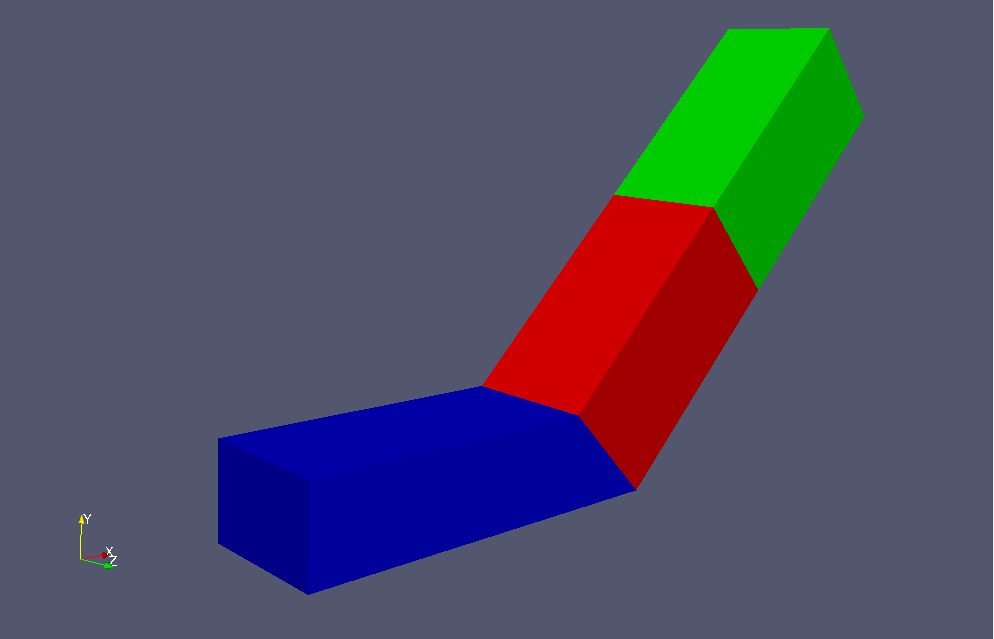 Model geometry
Model geometry
Porous media depends on the Darcy-Forchheimer law 
The parameters that determine the properties of the porous media, Dij, F, the direction of the properties, and the region in which the porous media, are specified in the file constant/porosityProperties as follows.
porosity1
{
type DarcyForchheimer;
active yes;
cellZone porosity;
DarcyForchheimerCoeffs
{
d (5e7 -1000 -1000);
f (0 0 0);
coordinateSystem
{
type cartesian;
origin (0 0 0);
coordinateRotation
{
type axesRotation;
e1 (0.70710678 0.70710678 0);
e2 (0 0 1);
}
}
}
}
By specifying non-zero for "nUCorrectors" in "SIMPLE" in the file system/fvSolution, the calculation is performed in implicit method instead of explicit method.
The standard k-ε model is used for the turbulence model.
The meshes are as follows, and the number of mesh is 22000.
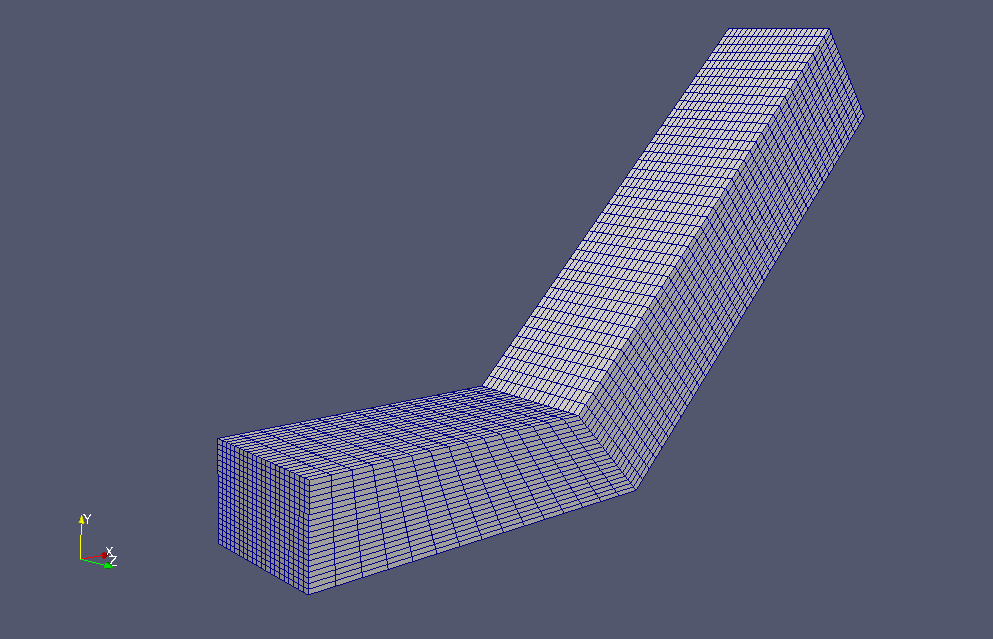 Meshes
Meshes
If you want to visualize turbulent energy and turbulent dissipation rate, check "k" and "epsilon" in the "Properties" tab in ParaView.
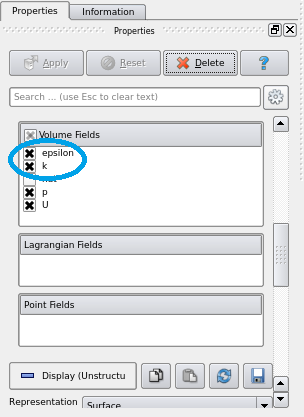 Check "k" and "epsilon" in "Properties" tab
Check "k" and "epsilon" in "Properties" tab
The calculation result is as follows.
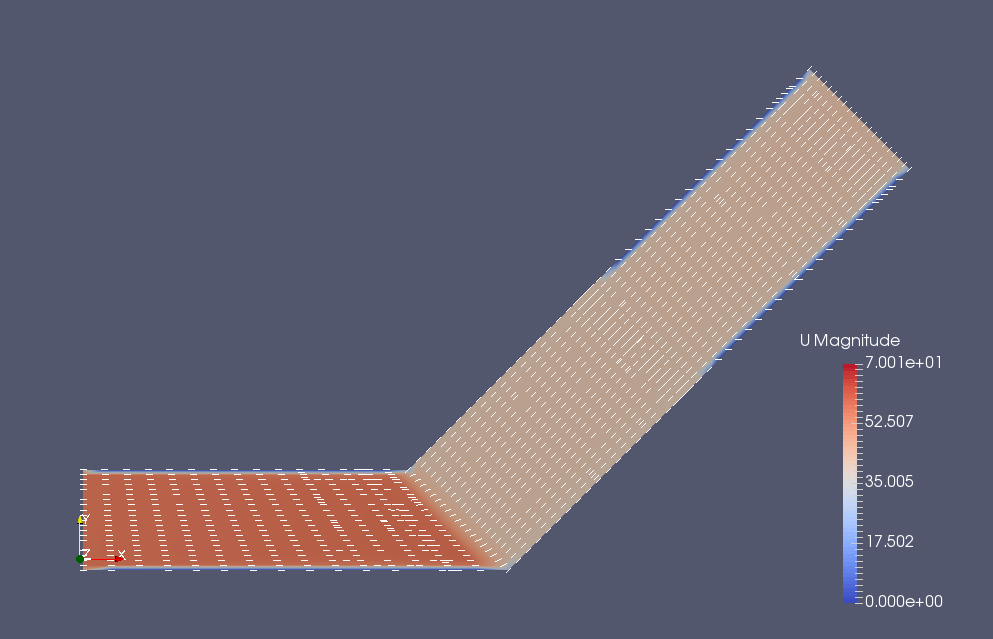 Flow velocity (U)
Flow velocity (U)
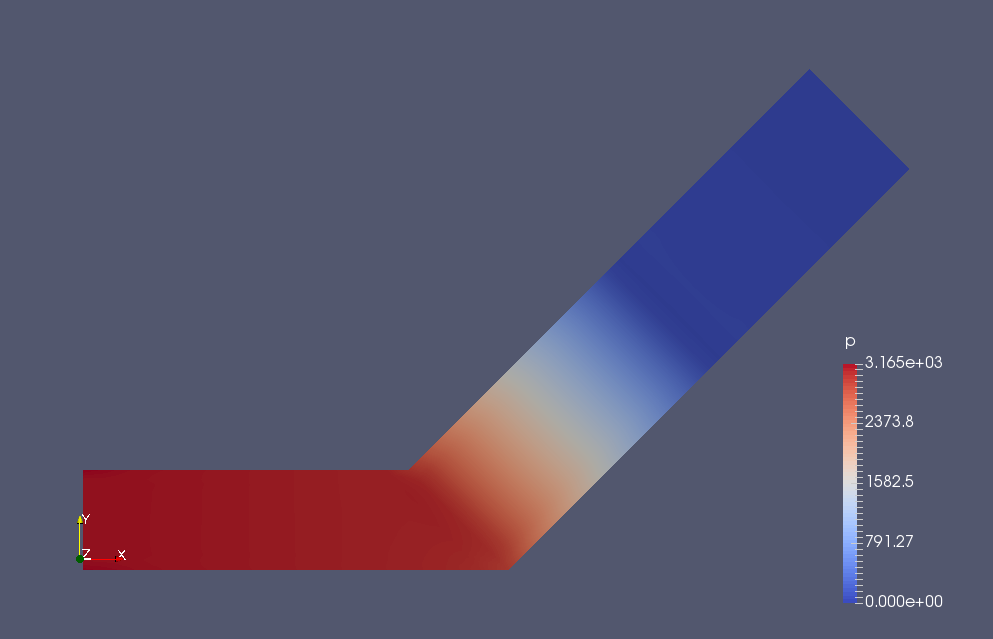 Pressure (p)
Pressure (p)
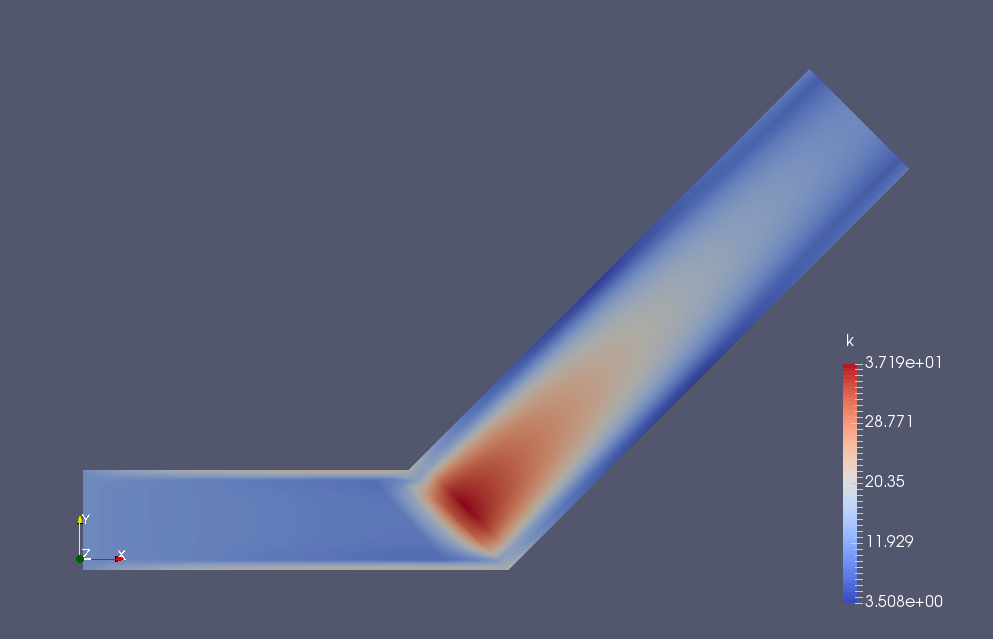 Turbulent energy (k)
Turbulent energy (k)
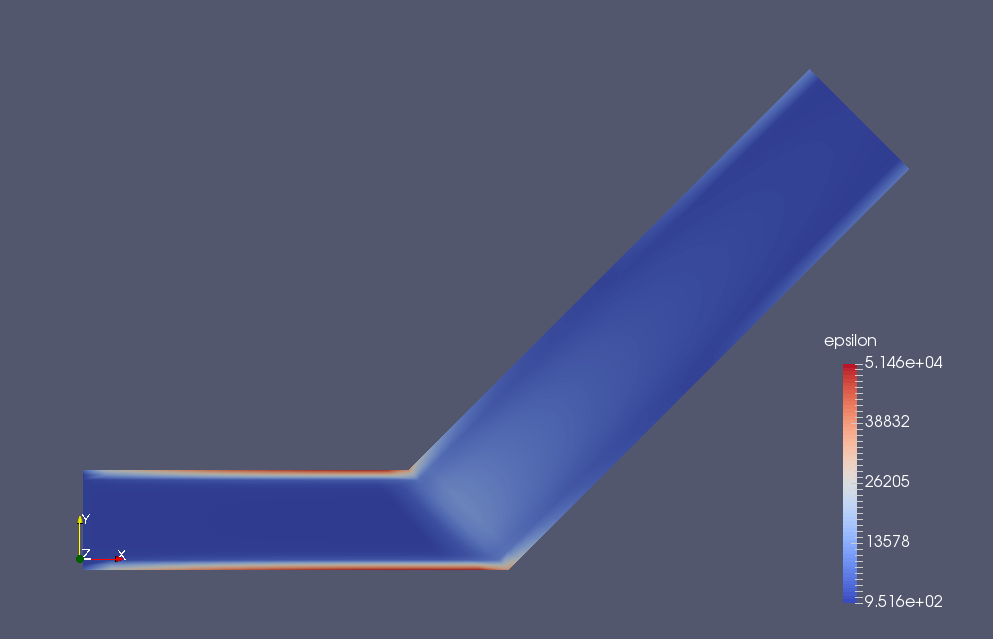 Turbulent dissipation rate (epsilon)
Turbulent dissipation rate (epsilon)
We can see that the flow velocity and pressure are greatly reduced in the porous media part.
Commands
cd angledDuctImplicit
m4 system/blockMeshDict.m4 > system/blockMeshDict
blockMesh
porousSimpleFoam
paraFoam
Calculation time
7 seconds *Single, Inter(R) Core(TM) i7-2600 CPU @ 3.40GHz 3.40GHz